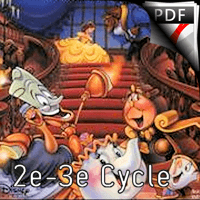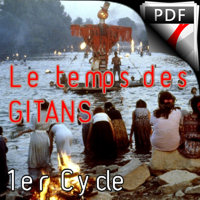Download your PDF score!
By music teachers, for their students
| Title | Author | Set | Prices | ||
|---|---|---|---|---|---|

|
Beauty and the Beast (Brass Quartet) |
Alan Menken |
Quatuor de Cuivres |
14.90€ |
|

|
Beauty and the Beast (Be Our Guest) |
Alan Menken |
Quintette de Cuivres |
14.90€ |
|

|
Kustino Oro (Flexible instrumentation) |
Traditionnel Yougoslavie |
Ensemble Variable |
19.90€ |
|

|
Ederlezi (Fanfare) |
Traditionnel balkans |
Fanfare |
7.90€ |
|

|
Misirlou (Pulp Fiction) |
Traditionnel |
Ensemble Variable |
19.90€ |
|

|
My Way (Brass Quartet) |
Claude François, Jacques Revaux |
Quatuor de Cuivres |
7.90€ |
|

|
Londonderry Air (Brass ensemble) |
Traditionnel Irlandais |
Ensemble de Cuivres |
7.90€ |
|

|
Silent Night (Brass Quartet) |
Franz Xaver Gruber |
Quatuor de Cuivres |
5.90€ |
|

|
We Wish You a Merry Christmas (Trumpet String orchestra) |
Traditionnel Anglais |
Trompette, Chant et Orchestre à Cordes |
19.90€ |
|

|
Toy Story (You've got a friend in me) |
Randy Newman |
Quintette de Cuivres |
14.90€ |
The trumpet is a wind instrument commonly used in classical and jazz ensembles. The trumpet group contains the highest register instruments of the brass family. Historically, trumpet-type instruments have been used as signaling devices in combat or hunting, with examples dating back to at least 1500 B.C.; they did not begin to be used as musical instruments until the late 14th or early 15th century. Trumpets are used in symphony orchestras, wind bands and jazz ensembles, as well as in popular music. They are played by blowing through almost closed lips, producing a "buzzing" sound that triggers a vibration in the air column inside the instrument. Since the end of the 15th century, they are mainly made of brass.
There are several distinct types of trumpet, the most common being sounded in Bb, with a pipe length of about 1.48. Before the invention of the piston, trumpets had a fixed length, whereas modern instruments usually have three (or sometimes four) pistons to change their pitch. Each piston, when pressed, increases the length of the pipe, thus lowering the sound of the instrument.
The first trumpets date back to 1500 BC. Bronze and silver trumpets from the tomb of Tutankhamen in Egypt, bronze trumpets from Scandinavia and metal trumpets from China date back to this time. The trumpets of the Oxus civilization (3rd millennium B.C.) in Central Asia are made of a single sheet of metal, which is considered a technological feat.
The Shofar, made of a ram's horn, and the Hatzotzeroth, made of metal, are both mentioned in the Bible. They were played in Solomon's Temple about 3000 years ago. It was said that they were used to blow up the walls of Jericho. They are still used in some religious services. The Salpinx was a straight trumpet of 1.6m long, made of bone or bronze. Salpinx competitions were part of the first Olympic Games.
The pre-Columbian people of ancient Peru depicted trumpets in their art dating back to the year 300. Early trumpets were signaling instruments used for military or religious purposes, rather than music in the modern sense; and the modern bugle continues this signaling tradition.
Improvements in instrument design and metal fabrication in the late Middle Ages and Renaissance increased the trumpet's usefulness as a musical instrument. The natural trumpets of this period consisted of a single coiled tube without valves and could therefore only produce the notes of a single harmonic series. The development of the upper "clarino" register by specialized trumpeters - notably Cesare Bendinelli - would lend itself well to the Baroque era, also known as the "golden age of the natural trumpet". During this period, a vast body of scores was written for virtuoso trumpeters. The art was revived in the middle of the 20th century and natural trumpet playing is once again a flourishing art form throughout the world. Many modern musicians in Germany and the UK who perform baroque music use a version of the natural trumpet with three or four holes to help correct the notes.
The melody-dominated homophony of the Classical and Romantic eras relegated the trumpet to a secondary role by most major composers because of the limitations of the natural trumpet. Berlioz wrote in 1844:
Despite the real nobility and distinguished character of its sound quality, there are few instruments more degraded than the trumpet. Until Beethoven and Weber, all composers - with the exception of Mozart - persisted in confining it to the function unworthy of performing, or in making it sound two or three banal rhythmic formulas.
The attempt to give the trumpet greater chromatic freedom in its range saw the development of the keyed trumpet, but this was a largely unsuccessful endeavor due to its poor sound quality.
Although the impetus for the manufacture of a tubular piston began as early as 1793, it was not until 1818 that Friedrich Bluhmel and Heinrich Stölzel jointly applied for a patent for a piston made by W. Schuster. The scores of the symphonies of Mozart, Beethoven and even Brahms were still played on natural trumpets. Because of this late development of the chromatic capacity of the instrument, the repertoire of the instrument is relatively limited compared to other instruments. The 20th century saw an explosion in the quantity and variety of scores written for the trumpet.
